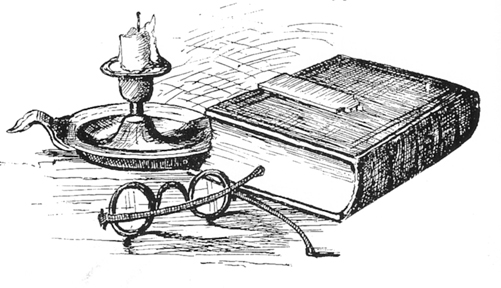It’s Only Logical: part 1 in the series EDITING: MORE THAN I BEFORE E
by Laura Daly
Tomorrow is the last day of Words Matter Week, so it seems appropriate to start a blog entry on editing and writing. My friend Lisette had suggested a while ago that because I’ve been a freelance editor since 1984, I might have some knowledge, tidbits, tricks of the trade, or advice to give on the subject. I believe my initial reaction to her was “Huh?” because, from my perspective, I’m still learning how to be an editor. The longer I work at it, the more I realize how much I don’t know, how much there is for me to learn. But she persisted, and I can never say no to Ms. Brodey, so, what the heck, I’ll give it a shot and put out some ideas and offer some suggestions and probably some two-bit opinions that I hope may be helpful.
Where to begin: Well, I think I’ll start with internal logic and why it’s a very good thing to watch for in any writing. Now, I’m not using the term in the strict Introduction to Aristotelian Logic sense. I mean it in the sense of maintaining coherency and consistency. So, for example, when writing a work of fiction, that means paying attention to the details: the descriptions of characters, their backgrounds, their traits (character A is X, Y, and Z); the main developments in the plot and their relations to each other (plot point B happens because of points C and D, which are foreshadowed by point E); the time, both within the actual boundaries of the plot and before and after the storyline (plot point F occurs at X location on the story’s timeline); the locations—where events in the narrative take place, where characters are from or are going, that kind of thing (character G came from place H and currently is in place I and will wind up in place J); and the influences on the storyline, or why things occur (plot point K happens because of L, M, and N). (Being a J school grad, I resorted, if you noticed, to calling on the 5Ws: the who, what, when, where, and why of the story.)
Writers have different ways of keeping track of these details. Many do up copious lists, outlines, and descriptions, per character or chapter or major developments in the plot. Some do character sketches that may include details that never make their way into the story but that act as biographies for characters and help to keep traits, descriptions, and so on, clear. For a story covering a particular period of time, whether 24 hours or 3 months or 200 years, a timeline showing the plot points is helpful. Not all of these recorded details may wind up in the final story, but they help a writer stay true to the characters and the plot.
Editors can keep track, for instance, of descriptions of characters: Susie, 24, blonde, lives in Aberdeen, Maryland, hates crab, came from Dubuque; Butch, 39, wears flannel shirts, speaks with a drawl, once worked as a carny; plot point O takes place on planet Zoltar, which is two light-years from Boldorf—whatever details the author provides. With an involved storyline, editors may want to keep some notes or rely on the very helpful find feature in Word. Also, quick fact checking is very important and useful (even though publishers these days don’t seem to bother having fact checkers on staff). I’ve been asked to submit lists of characters, with descriptions, along with place names, as part of style sheets. As a matter of course for works of nonfiction, I keep lists of place names and proper names, along with a basic timeline, when needed. I also do fact checks, which are speeded up thanks to online sources. (A discussion on finding reliable sources might be good for another blog entry down the road.)
More importantly, things have to make sense within the context of the work. They have to be logical, even if a story itself is not meant to be realistic. So, for instance, a character who is in his late 20s in a story, which takes place now, can’t have been the set designer for a movie from 1985; that would mean he would have to be at least in his 50s, unless he was a child genius set designer, in which case he could be in his 40s. (This kind of discrepancy actually came up in a recent project.) A villain who is creeping up the stairs to a second-floor bedroom can’t suddenly be downstairs in the basement burying a body unless a gap in time is acknowledged in the story. An Edwardian gentleman can’t recite “In Flanders Fields.” You get the idea.
So, the lesson today is be consistent, be coherent, be logical. Oh, and don’t forget: words matter.
If you’ve come across odd internal logic problems in anything you’ve read recently or want to share some ideas on how you maintain internal logic in your own writing or editing, join the discussion.
Laura Daly, a freelance editor, writer, and proofreader based in Maywood, NJ, has worked on fiction and nonfiction trade books, textbooks, trade magazines, and journals. She can be reached at laurajdaly@earthlink.net.Tweet




Laura, thank you for this great post! It’s a joy to have you here as a guest at my Writers’ Chateau.
For every novel I write, I keep an extensive “time chart” which not only synopsizes what I’ve written, but gives me the date, day, and time of every scene in the novel. As you say, much of this information is never given to the reader, but it helps me to maintain continuity. And, if a character refers to something that happened, I know that he or she can say “two weeks go” or “two days ago” and it will be correct.
I also keep character sketches and a basic outline “to maintain internal logic.” Often, characters and stories go elsewhere than planned, but doing this helps me to make sure that I correct everything to match whatever it is I have decided works best.
Some of these steps are tedious, but having them can save a writer from complete disaster. These are all steps well worth taking from the get-go!
Looking forward to your next blog. Thank you so much for being here.
Your attention to details shows in your writing, Lisette. And thanks for having me be part of this adventure in the blogosphere.
Hello Laura & Lisette:
Thank you both for a fascinating blog post which is helpful for all writers regardless of what stage they are in their careers. As you said, Laura, when it comes to editing, we are constantly learning.
I fully agree with being logical, as without it, our work will fall flat. I was advised to keep a “time chart’ which has assisted me greatly with my current book.
Thanks again for the many tips.
Best, Ross 🙂
I’m looking forward to hearing about your latest project, Ross. Much luck with it.
What a useful and witty blog for editors and writers alike! I especially appreciated Ms. Daly’s reminder that the find feature in Word can often help one check on changes, planned or accidental, in a character or plot.
I would post more, but I don’t have time today and tomorrow is the start of Words No Longer Matter Week.
Glad you like, Miss Kitty. Sincerely, Marshal Dillon
P.S. Isn’t it sad that sometimes it feels like it’s Words No Longer Matter Week? We must all fight the good fight.
Good points, Laura. I sometimes feel that characters’ reactions don’t make sense for the context, in early drafts, and I suspect “internal logic” is a more concise way to explain this problem. 🙂
Another good example of an internal logic problem, Molly. That’s not to say characters don’t develop and go against their set patterns, just like real people, but reasons for the change are needed.
Hey, unrelated, Kitty mentions the find feature in Word, the Microsoft PC program. I’m assuming Apple also has such a feature. Is that true?
Laura, a nice summary that quite a few people should read – I’m glad I did. By the way, when it comes to mapping out a plot, I always make sure that I comes before E, except after C.
Do you use a GPS to map a plot?
Hi Laura! Thanks very much for a thoughtful look at how to keep a story consistent. I often notice this problem when I watch movies, but it’s important to remember most movies are written works too. I have to say, I found it very helpful when you caught several internal logic problems while editing my stories. That kind of attention to detail sets you apart from the crowd. Fantastic work! And nice blog Lisette! Thank you both!
Thanks for your kind words, Gabriel. Your point about internal logic problems in movies is good. Maybe the overlap between movie scripts and fiction and nonfiction writing would make an interesting blog. We can talk about opening a scene with a striking bit of action.